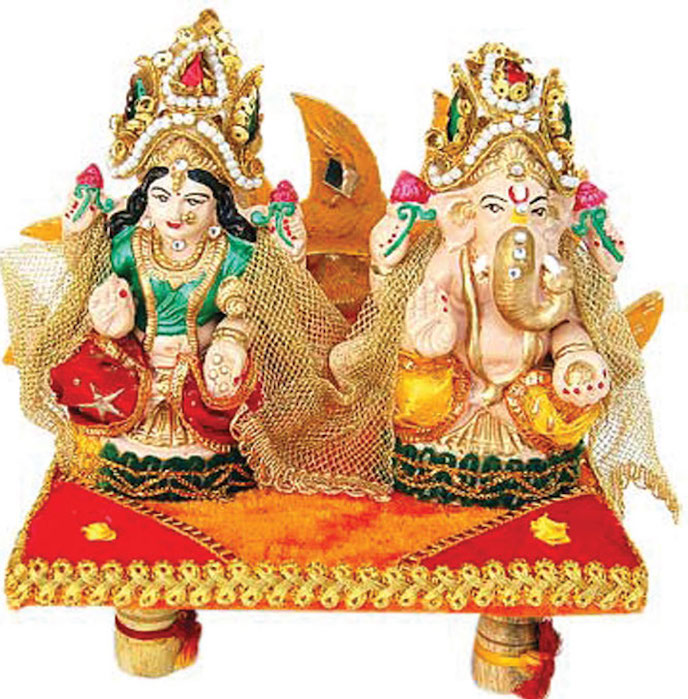
Simran and Sewa. These are the “Foundation of Sikhism”. It is the duty of every Sikh to practice Naam Simran (meditation on God’s name) daily and engage in Seva (selfless service) whenever there is a possibility- in Gurdwara; in community centre; old people’s homes; care centres; major world disasters, etc. Guru Nanak formalised these three aspects of Sikhism: Naam Japna – to engage in a daily practice of meditation and Nitnem by reciting and chanting of God’s Name. Kirat Karni – to live honestly and earn by ones physical and mental effort while accepting God’s gifts and blessings. A Sikh has to live as a householder carrying out his or her duties and responsibilities to the fullest. Vand Chakna – to share their wealth within the community and outside by giving Dasvand and practising charity (Daan), to “share and consume together.” The Sikh Gurus tell us that our mind and spirit are constantly being attacked by the Five Evils (or Five Thieves); Kam (Lust), Krodh (Rage), Lobh (Greed), Moh (Attachment) and Ahankar (Ego). A Sikh needs to constantly attack and overcome these five vices. The Sikh Gurus taught the Sikhs to develop and harness the Five Virtues which lead the soul closer to God and away from evil. These are Sat (Truth), Daya (Compassion), Santokh (Contentment), Nimrata (Humility) and Pyare (Love).
One Source
One God: Sikhi is a monotheistic and a revealed religion. In Sikhi, God—termed Vahiguru—is shapeless, timeless, and sightless (i.e., unable to be seen with the physical eye): nira?kar, akaal, and alakh. The beginning of the first composition of Sikh scripture is the figure “1”—signifying the universality of God
Equality
1. People of all religions and races are welcome in Sikh Gurdwaras
2. Women have equal status with men in religious services and ceremonies
Human Life Precious Above Other Life
1. The human life is supreme and it is through this life that we can achieve oneness with God’s will.
2. Finding God in this life and living by his commands helps us to attain God’s mercy.
These can be summed up in the Mool Mantar:
1. One Universal Creator God
2. The Supreme Unchangeable Truth
3. The Creative Being
4. Without Fear
5. Without Hate
6. Timeless whose spirit is throughout the universe
7. Beyond the cycle of death and rebirth
8. Self-existent
9. By the grace of the guru
10. God is made known to humanity.
11. Chant and meditate on His name
12. True in the beginning, true now, and says Nanak, will be true forever
The Five Ks
The 5 Ks date from the creation of the Khalsa Panth by Guru Gobind Singh in 1699.
The Guru introduced them for several reasons:
Adopting these common symbols would identify members of the Khalsa Because all members of the Khalsa wear the 5 Ks the members of the community are more strongly bound together Each K has a particular significance
Five Articles of Faith
Sikhs have five articles of faith natively known as Kakaars or Five K’s. The articles include Kesh (uncut hair), Kanga (comb), Kara (Bracelet), Kirpan (sword) and Kachehra (a special type of shorts). A baptized Sikh is to wear all five articles of faith. These articles are not merely symbols, they not only represent or identify a Sikh but also have deep meanings. Guru Gobind Singh Ji created a lifestyle to keep a Sikh focused life. Guru’s lifestyle does not let one dwindle or get side tracked.
Kesh
Hair is not just a symbol, it is the gift from God. Guru Nanak Dev Ji started the practice of keeping the hair unshorn. The keeping of hair in its natural state is regarded as living in harmony with the will of God. It is also a symbol of Khalsa brotherhood and the Sikh faith. Hair is an integral part of the human body created by God and Sikhism call for its preservation. Sikhs live the way God made humans and never cut their hair. Guru Gobind Singh Ji instructed Sikh to wear Turban in order to protect their hair. Turban has many purposes and one is to keep a Sikh focused in his beliefs.
Kanga
The comb is necessary to keep the hair clean and tidy. A Sikh must comb his hair twice a day and tie his turban neatly. The Gurus wore turbans and instructed the Sikhs to wear turbans for the protection of hair, promotion of social identity and cohesion. It has thus become an essential part of the Sikh dress.
Kara
The bracelet symbolizes restrain from evil deeds. It is worn on the right wrist and reminds the Sikh of the vows taken by him. Sikh as a servant of the Guru, should not do anything which may bring shame or disgrace. When he looks at the Kara, he is made to think twice before doing anything evil with his hands.
Kirpan
The sword is the emblem of courage and self-defense. It symbolizes dignity, self-reliance, capacity and readiness to always defend the weak and the oppressed. It helps sustain one’s martial spirit and the determination to sacrifice oneself in order to defend truth, fight against oppression and fight to preserve Sikh moral values. The rule is never to do injustice and never let anyone perform injustice. A Sikh is a devotee first and to protect his devotion, a Sikh is a warrior as well. A real Sikh will never let weapons take the precedence over his spiritual values and devotion. A real Sikh will always help the one in need and fight for him/her regardless of the person’s caste, color or religion. When all other means of self-protection fail, the Sikh can use his sword to protect himself and others. A Sikh is never to use his sword to attack anyone.
Kachehra
Kachehra, under shorts, symbolizes to live a faithful life. It reminds the Sikh of the need for self-restrain over passions, lust and desires. Apart from its moral significance, it ensures briskness during action and freedom of movement at all times. During today’s dark world filled with lust, if a Sikh ever gets carried away in the moment of lust, the Kachehra refrains one from making wrong moves and reminds him of his duties. The Five K’s are not supposed to foster exclusiveness or superiority. They are meant to keep the Sikhs united in the pursuit of ideal life. The articles of faith enable Sikhs to keep their vows made at the time of baptism. Wearing the symbols of faith keeps one close to being a Sikh and being a Sikh brings one closer to God.
Each and every one of Gurus’ teachings have a purpose and meaning because it was told to them by God Himself. God has created a religion, a path, a faith, which brings one closer to God and helps one to Unite with Him. In order to meet God, one has to live an honest life and meditate on God. Sikh Gurus themselves lived an honest life and showed everyone how it can be done while living a family life. If one is not a Sikh, it is harder to live truly. One Sikh writes his experience about his turban as follows: “My turban has saved me so many times that I cannot even begin to explain. Like most, I am also filled with greed. I even thought about cheating my way to make money. But everytime I think about it, I think about my turban.
A thought comes in my mind that how will my Guru feel if I do such a thing. I am a Sikh and a Sikh must walk on the path of humility and respect and live happily with whatever God has given me. If I have not had a turban on my head, I probably would have become a master-mind at stealing money. My turban saves me.” The Sikh symbols keeps a Sikh focused. It saves a Sikh from bad company and keeps a Sikh close to God. Guru created a lifestyle which helps one to be close to God and less likely to detour. Nowadays, rare are Sikhs that walk in the path shown by the Guru. Rare are the ones that do not cut their hair and live an honest life like a Sikh is suppose to. To the ones that follow the path shown by God, Guru Nanak says, he is willing to sacrifice himself for them.





Be the first to comment